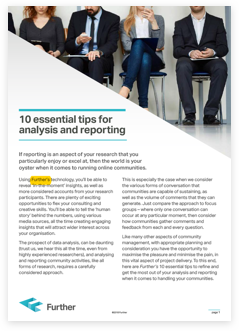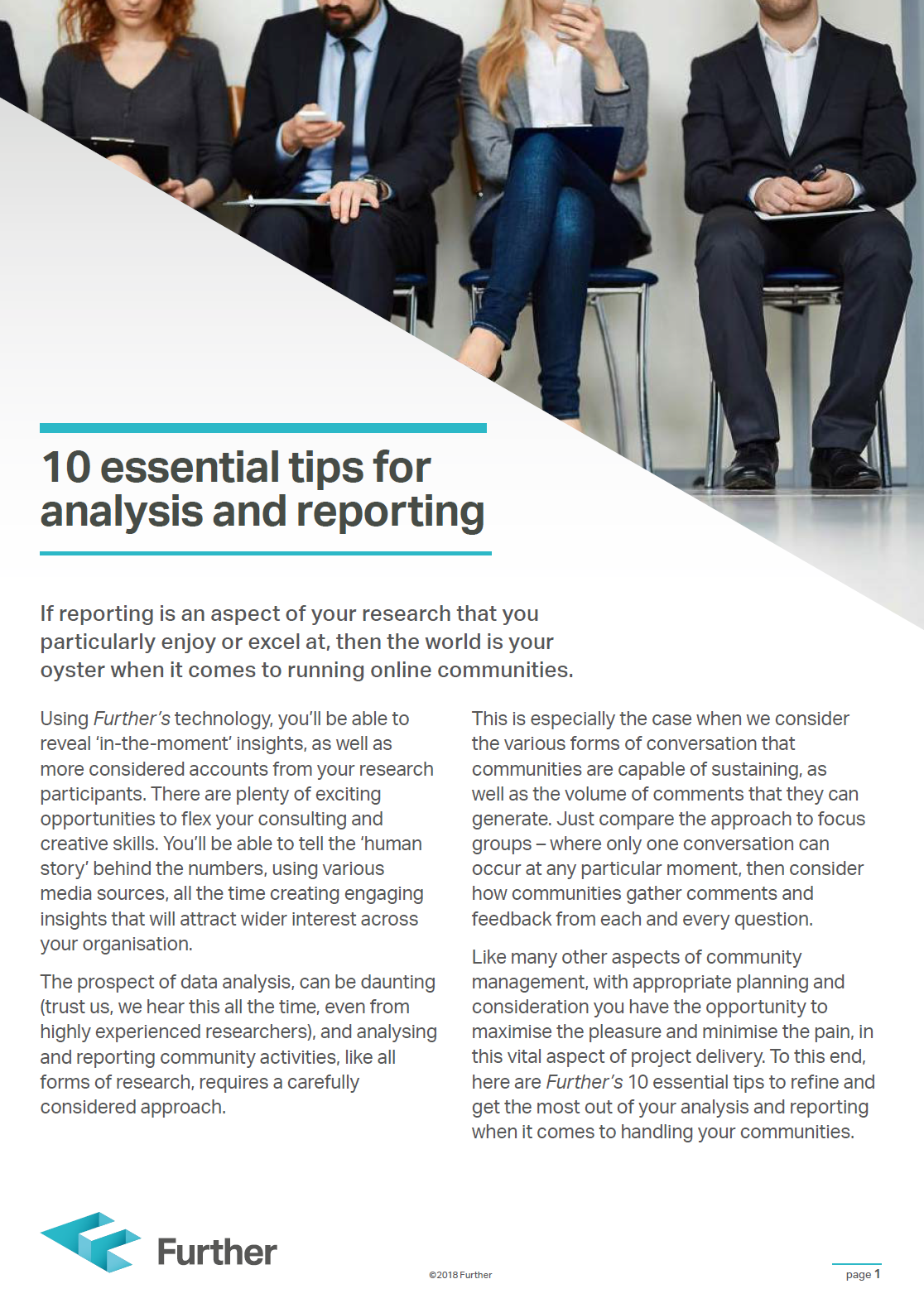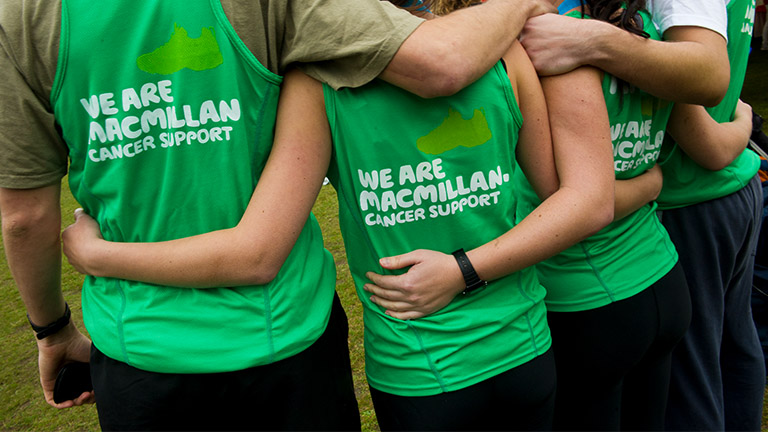If reporting findings in qualitative research is an aspect of your work that you particularly enjoy or excel at, then the world is your oyster when it comes to running online communities.
Using our online qualitative platform, you’ll be able to reveal ‘in-the-moment’ insights, as well as more considered accounts from your research participants. There are plenty of exciting opportunities to flex your consulting and creative skills. You’ll be able to tell the ‘human story’ behind the numbers, using various media sources, all the time creating engaging insights that will attract wider interest across your organisation.
However, if the prospect of data analysis is daunting (trust us, we hear this all the time, even from highly experienced researchers), then look no further, armed with the tips below you can refine your approach and reduce the complexity of reporting qualitative research findings from your community activities.
An asynchronous online qual environment can support and sustain multiple forms of conversation and produce vast quantities of comments and feedback. Therefore, choosing the qualitative research report format early on is vital particularly if you're used to running offline focus groups – where only one conversation can occur at any particular moment. Its worth remembering that in an online qual context comments and feedback are gathered from each and every question.
Like many other aspects of community management with appropriate planning and consideration, you have the opportunity of maximising the pleasure and minimising the pain of data analysis and report writing and actually learn to enjoy this vital aspect of project delivery.
To this end, here are Further’s 10 essential tips to refine and get the most out of your analysis and reporting when it comes to handling your research communities.
1. Be realistic about your time
It’s important to know how to use your time and ensure that you’re setting aside enough time to plan, develop and present the all-important analysis and evaluation. Looking for a rule-of-thumb estimate? One hour of an experienced researcher’s time should be set aside per PowerPoint slide generated.
2. Command and conquer
Make sure that at the reporting stage you’re involving the moderators whom you’ve worked with throughout the course of the study – their insight into the analysis you need to present will be invaluable. Break down the bulk of analysis by segments and, where possible, delegate to other team members (to cover certain activities, for example) or gather insights amongst community segment members. Make sure that you arrange frequent catch-ups to keep everything on track.
3. Take a deep breath and clear the decks
It’s important that you try and minimise distractions and give yourself the time you need to focus on the analysis. Try and block out diary time that allows you to really get stuck into the study, without interruption.
4. Write down the 10 things you think your client should know right away
Make sure that you do this before you get your head stuck into the analysis. If you’ve been moderating during the study, conversations will be fresh in your head and it is a golden opportunity to get the most from your responses.
5. Dive right in, but choose your diving spots carefully
Once you’re ready, it’s time to get into it. Make sure you start off by choosing a logical order and prioritise activities to analyse. This doesn’t have to be the same order as your fieldwork, just one that makes sense against the outcomes you’re seeking, or the story you’re looking to tell the client. Make sure that you don’t lose sight of the big picture and get bogged down in data.
6. Tag killer quotes
This one is easy. Make sure that you use the tagging facility in Further platforms to highlight various comments you would like to use in your client’s final deliverables.
7. Consider software to support your analysis
Everybody has their ‘process’ and way of making notes during analysis. Mind-maps, and/or Post-it-notes, can be useful to illustrate emerging themes. Fortunately, there are now a variety of online solutions that can support this including a number of free apps. This software not only helps to keep your desk space tidy (and your desk neighbours happy) but also offers the opportunity to share ready-packaged digests and deliverables to the client as a basis for topline reporting discussions.
8. Conduct analysis by segments
Throughout your analysis, develop your knowledge of the mainstream consensus view (if such a view exists), then seek to compare and contrast groups of individuals whose attitudes and behaviours might vary on the basis of their segment criteria and demographics.
Sometimes in NPD/Innovation it can be useful to pre-identify extremes/outliers, or identify these individuals on the basis of their engagement. What makes these individuals different and/or unique?
Sometimes, drawing comparisons can give your client useful clues on next steps to inspire innovation and future concept and product developments.
9. Does your top 10 list still make sense?
Keeping this list in your mind’s eye, check the analysis against it and, if needs be, revise the list accordingly.
Why not share the list with your client once you’ve sense-checked it? Another way of doing this is to show a colleague what you’ve been up to and let them critique it from a ‘so-what’ perspective!
10. Remember 'The Power of One'
Tell stories about real people, not community members, participants or respondents.
Remember you have the opportunity to combine feedback in a variety of different forms (from showreels, to images, to key comments) to amplify the human voice and enable your research to engage wider stakeholder groups across the business.
11. Bonus - Look for interesting ways to engage stakeholders
Research industry representatives bemoan the use of PowerPoint, but itremains a popular choice for presenting market research. Try to think out-of-the-box when it comes to enhancing stakeholder engagement.
A project carried out by Further for rice brand Amira, involved creating postcards addressed to the company CEO highlighting what consumers considered to be the company’s priorities to support the launch of their brand of super-premium rice.
Other projects have created mock bedrooms and living rooms to bring customer segments to life using qualitative research.
Download your copy of the 10 tips guide to analysis and reporting below and if you want to discover more creative ways you can share insights with impact and tell better stories with your online qual, read our article here.
ARTICLE CONTENTS
1. Be realistic about your time
3. Take a deep breath and clear the decks
4. Write down the 10 things you think your client should know right away
5. Dive right in, but choose your diving spots carefully
7. Consider software to support your analysis
8. Conduct analysis by segments
9. Does your top 10 still make sense?
10. Remember 'The Power of One'
Yours to keep
























.webp)
.webp)
.webp)
.webp)